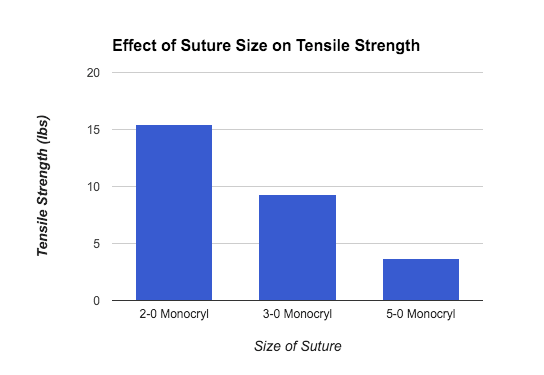Hey Everyone!
I have finally started to prep for my experiment on testing the difference in burst pressure on tissues sutured with V-loc, Stratafix, and regular sutures. For the methodology, I will be taking segments of pig uterus of approximately 5 cm in length, closing both ends with running sutures, and inserting a catheter in the mid-section of the segment to infuse/inflate the pipe-like structure with fluid. The pressure will be measured by the arterial line, which is connected to the catheter (see previous blog post for more details on the A-line).
I am planning to do 10-15 trials each per type of suture. Next week I will begin running tests, but as for this week, I will be preparing the segments to be tested.
To go in a bit more detail, a running stitch is one of the most basic stitches in surgery. It isn’t as pristine in appearance when compared to the other sutures (in which the suture can be hidden and only the knots can be seen on both ends). In the procedures I have seen thus far, the incisions have all been closed with the intention of minimizing damage to the skin’s appearance: in other words, so that sutures are not visible when looking at the wound. This is called a subcuticular suture.
 |
| Pig Uterus! D’: |
Working with pig uterus wasn’t as gross as I had expected, but the smell is slightly strong (especially since (as of now) I am working in the clinic’s Office). Hopefully by next week, there will be a room that I can use to run my experiments without the smell affecting everyone. If anyone is curious, pig uterus reminds me a lot of pig intestine (or rather, what I would imagine intestine to look like??) Dr. Truong even agreed with me—if the packaging had not labelled it as ‘Pig Uterus’, I’m not sure I would have known the difference.
This week when I met with Dr. Truong, I was allowed to enter the physician's dining hall, which is only open to physicians and studying med students! Eating here was super intimidating, especially as I sat next to so many doctors and professionals.
Before signing off, Happy Easter everyone! Here’s a great surgical video (warning: graphic content) to celebrate the weekend. See you guys next week!
Vanessa




